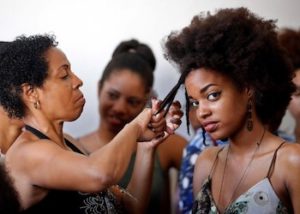
*Afro Cubans are celebrated on this date in 1492. Afro Cubans are of Black African ancestry, mostly West African because of the Middle Passage. The term Afro Cuban can also refer to historical or cultural elements in Cuba thought to emanate from this community and the combining of native African and other cultural elements in Cuban society, such as race, religion, music, language, the arts, and class culture. According to a 2012 national census that surveyed 11.2 million Cubans, 1 million described themselves as Afro Cuban or Black, while 3 million considered themselves "mulatto" or "mestizo." Thus, a significant proportion of those living on the island affirms some African ancestry.
The matter is further complicated because a fair number of people still locate their origins in specific native African ethnic groups or regions, particularly the Yoruba, Akan, Arará, and Kongo, but also Igbo, Carabalí, Mandingo, Kissi, Fula, Makua, and others. A 2014 study estimated the genetic admixture of the population of Cuba to be 70% European, 22% African, and 8% Native American. Although Afro Cubans can be found throughout Cuba, Eastern Cuba has a higher concentration of Afro Cubans than other parts of the island. Havana has the largest population of any city in Cuba. In the 20th century, many native African immigrants came to Cuba, especially from Angola. Also, immigrants from Jamaica and Haiti have been settling in Cuba, most of whom settle in the eastern part of the island due to its proximity to their home countries, further contributing to the already high percentage of blacks on that side of the island.
The number of Afro Cubans on the island increased after the 1959 Cuban revolution due to mass migration from the island of the largely white Cuban professional class. A small percentage of Afro Cubans left Cuba, mostly for the United States (particularly Florida), where they and their U.S.-born children are called Cuban Americans, Hispanic Americans, and African Americans. Only a few resided in nearby Spanish-speaking countries of the Dominican Republic and the U.S. territory of Puerto Rico. The now-defunct Institute for Cuban and Cuban-American Studies at the University of Miami put the percentage of Cuba's Black population at 62%. The Minority Rights Group International says, "An objective assessment of the situation of Afro Cubans remains problematic due to scant records and a paucity of systematic studies both pre- and post-revolution."
The movement evolved from an interest in the rediscovery of African heritage. It developed in two very different and parallel stages. One stage stemmed from European artists and intellectuals interested in African art and musical folk forms. This stage paralleled the Harlem Renaissance and Négritude in the French Caribbean and coincided with stylistic European Vanguard (like Cubism and its representation of African masks). It was characterized by the participation of white intellectuals such as Cubans Alejo Carpentier, Rómulo Lachatañeré, Fortunato Vizcarrondo, Fernando Ortiz, and Lydia Cabrera, Puerto Rican Luis Palés Matos and Spaniards Pablo Picasso and Roger de Lauria.
The African-inspired art tended to represent Afro Cubans with cliché images. Writings by Afro Cuban writers began to be published in the 1930s in newspapers, magazines, and books, where they discussed their heritage. Afro Cuban and Afro Cuban heritage artists such as Nicolás Guillén, Alberto Arredondo, and Emilio Ballagas highlighted the once-marginalized African race and culture. It symbolized empowerment and individuality for Afro Cubans within the established Western culture of the Americas and Europe.
The lasting reputation of the Afrocubanismo movement was establishing a New World art form that used aesthetics from both European and African cultures. Although the actual movement of Afrocubanismo faded by the early 1940s, Afro Cuban culture continues to play a vital role in the identity of Cuba. The Cuban Revolution opened a space for extended research of African ethnic roots in Cuba. The rhetoric of the Revolution incorporates black history and its contribution as an important stratum of Cuban identity. The Revolution has funded many projects that restore the work of Afro Cubans to accommodate an African-driven identity within the new anti-racist Cuban society.